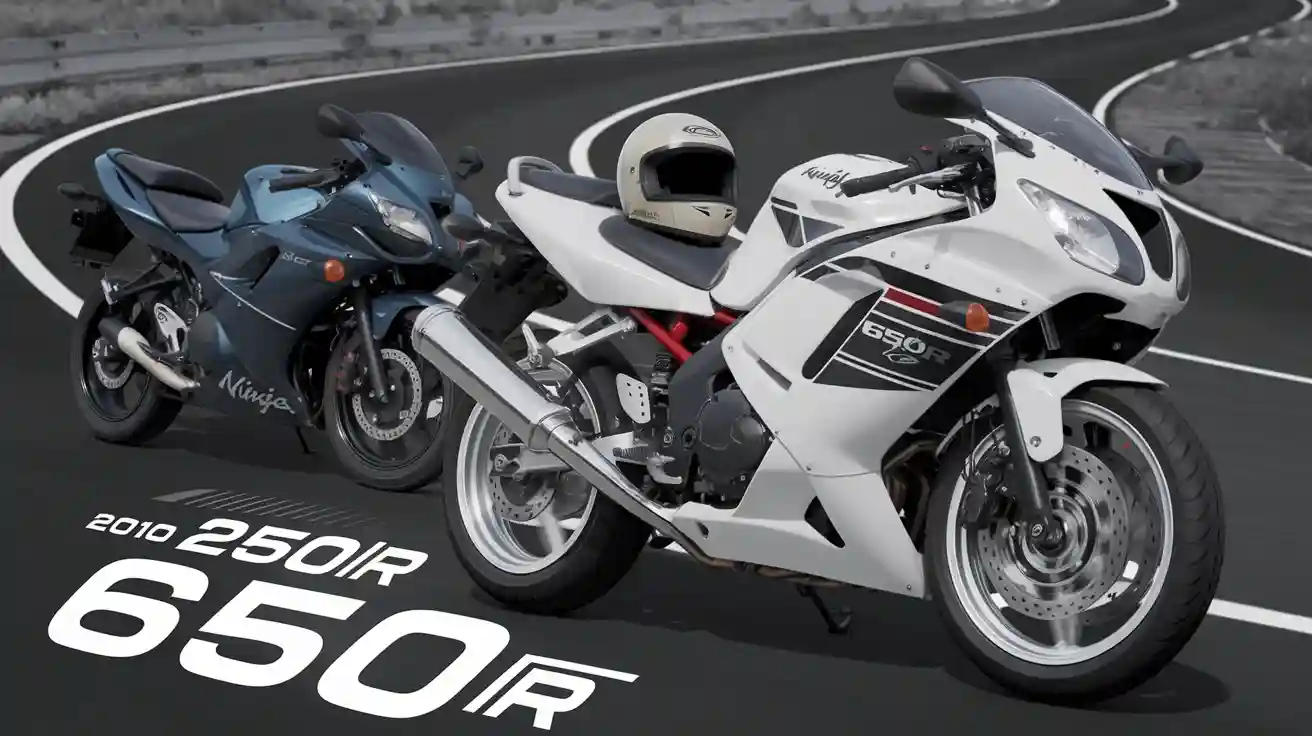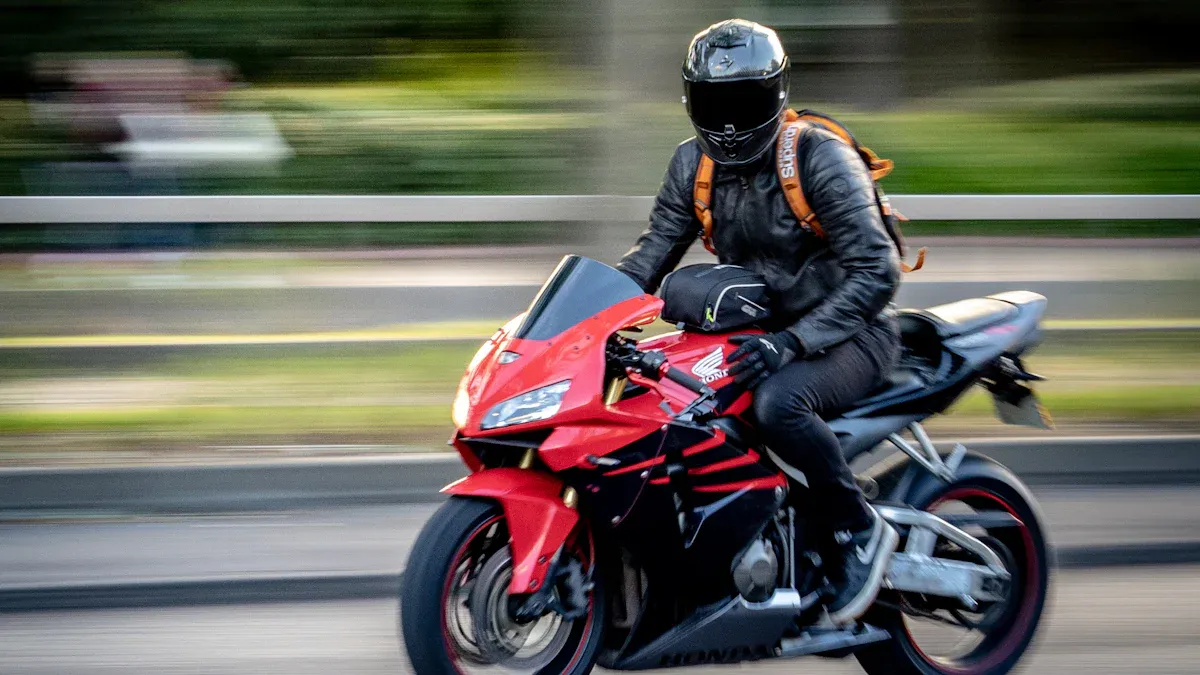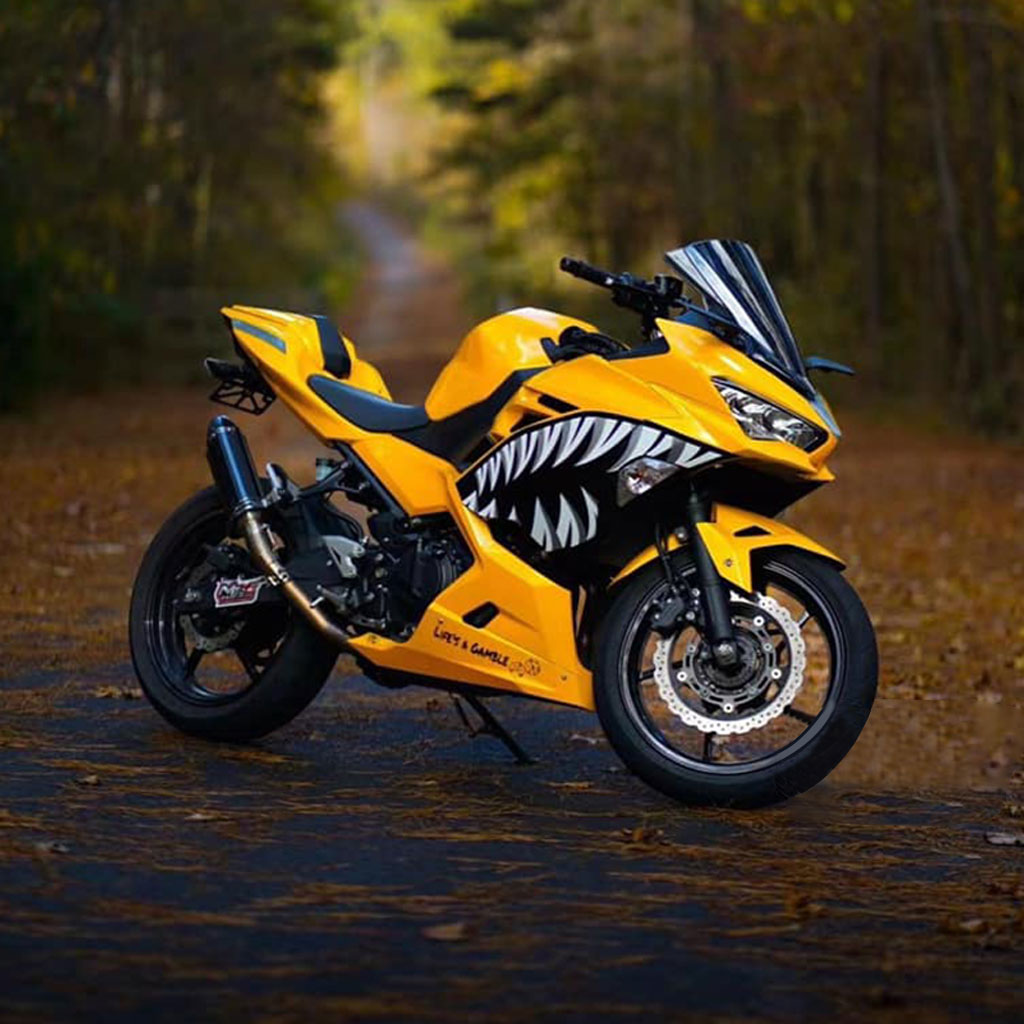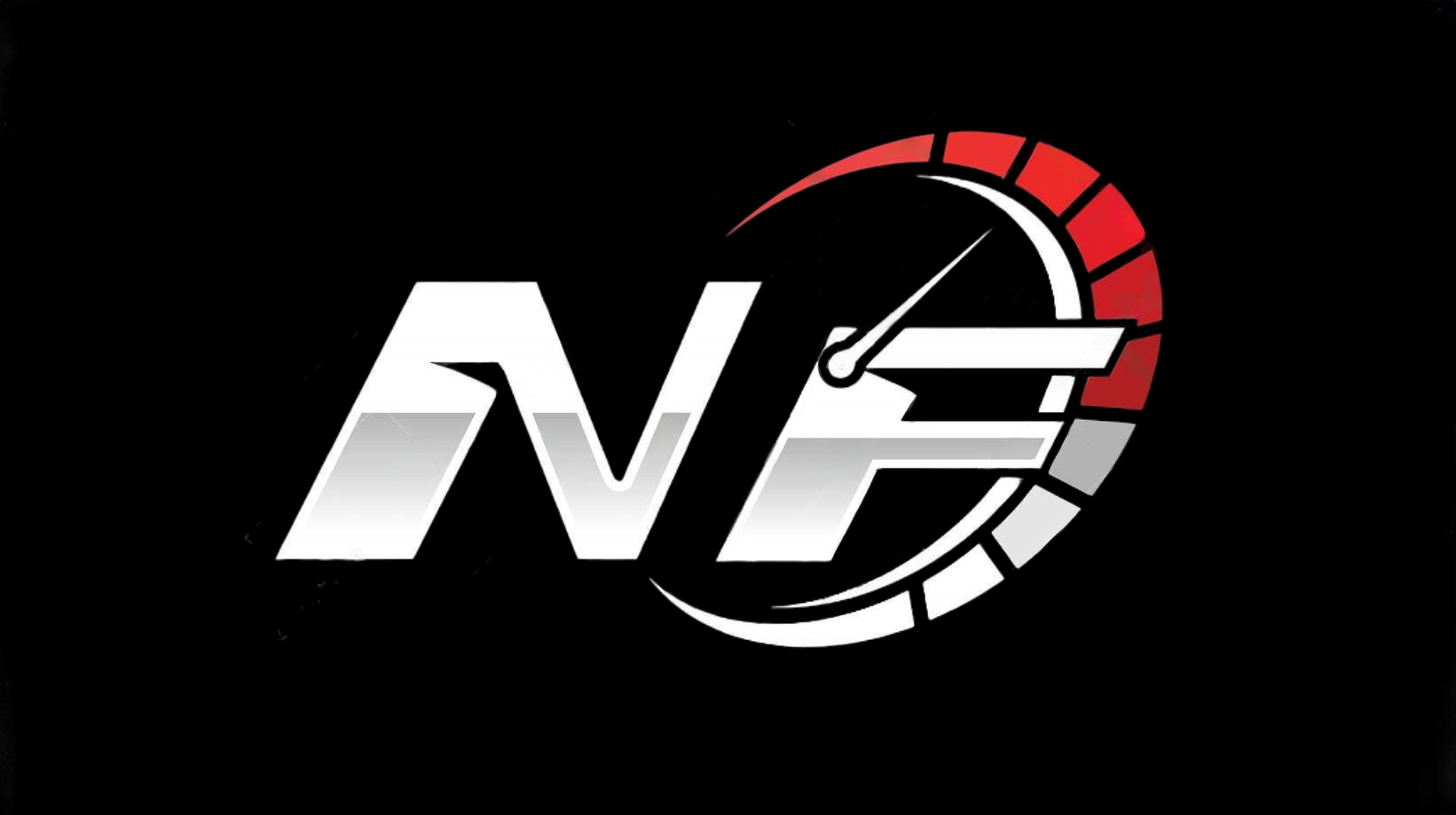2010 250R Ninja to 650R: A Surprising Step Up

Thinking about moving up from your 2010 250R Ninja to a Kawasaki Ninja 650R? Many first-time riders and entry level riders wonder if this is the right step. You might love your Kawasaki beginner bike, but the extra power, bigger size, and fuel injection of the Ninja 650R can feel like a huge change. New riders often find the Kawasaki 650R more stable on highways and better for long trips. Still, some riders worry about comfort, maintenance, and the Kawasaki’s transmission reliability. If you’re a beginner or just started riding motorcycles, you’ll want to know what makes the Kawasaki Ninja 650R a smart next bike.
Key Differences: 2010 250R Ninja vs 650R Motorcycle
Engine Power and Performance
When you compare the 2010 250R Ninja to the Ninja 650R, the first thing you notice is the engine. The 250R uses a 249 cc engine that makes about 30 horsepower. The Ninja 650R jumps to a 650 cc engine with 68 horsepower. That’s more than double the power! You feel this right away when you twist the throttle. The 650R also gives you more torque, so you get stronger acceleration at lower speeds. If you want a bike that can keep up on the highway or pass cars with ease, the Ninja 650R stands out.
| Model | Engine Power | Displacement |
|---|---|---|
| Kawasaki Ninja 250R | ~30 hp | 249 cc |
| Kawasaki Ninja 650 | 68 hp | ~650 cc |
This big jump in engine size and power moves you from entry level sportbikes to the world of middleweight motorcycles. You get a real taste of sport performance, but you also need to respect the extra power.
Weight and Handling
The Ninja 650R weighs 448 lbs, while the 2010 250R Ninja comes in at 375 lbs. That’s a 73-pound difference. You might notice the extra weight when you push the bike around or ride at low speeds. On the road, though, the 650R feels stable and planted. The heavier frame helps you feel more confident at higher speeds. The 250R is lighter and easier to flick through corners, which makes it great for learning. The 650R still handles well for a sportbike, but you need to adjust your riding style a bit.
Tip: Take your time getting used to the extra weight and power. Practice slow turns and stops in a safe area before hitting busy roads.
Ergonomics and Comfort
Kawasaki designed the Ninja 650R with comfort in mind. The seat is a bit taller at 31.1 inches, compared to the 250R’s 30.5 inches. For most riders, this small height difference does not cause problems. The 650R’s seat is also wider, which can make flat footing harder for shorter riders. If you are average height, you will likely find both bikes easy to handle. The Ninja 650R gives you a more upright position, thanks to its neutral footpegs and tubular handlebars. This makes long rides much more comfortable than on many sportbikes. The 250R has a more classic sport riding stance, which can feel cramped after a while. If you want a bike that blends sport and comfort, the Ninja 650R is a great choice among middle-weight sport-oriented bikes.
Technology and Features
When you look at the technology in the Ninja 650R, you see a big step up from the 2010 250R Ninja. The Ninja 650R brings more modern features that make your rides smoother and safer. You get fuel injection, which means the engine starts easier and runs better in all weather. The 250R uses a carburetor, so you might have trouble starting it on cold mornings. With the Ninja 650R, you just hit the starter and go.
You also notice the digital dash on the Ninja 650R. It gives you a clear view of your speed, rpm, fuel level, and even a gear indicator. The 250R has an old-school analog display. If you like to see all your info at a glance, the Ninja 650R feels much more advanced.
Here are some features you get with the Ninja 650R that you do not find on many older motorcycles:
- Digital instrument panel with gear indicator
- Fuel injection for smoother engine response
- Adjustable levers for brake and clutch
- Better headlights for night riding
- Optional ABS for extra safety
Tip: If you ride at night or in the rain, you will love the brighter headlights and the option for ABS. These features help you stay safe and feel confident.
The Ninja 650R also has a stronger frame and better suspension. You feel the difference when you ride over bumps or take sharp turns. The engine in the Ninja 650R runs smoother and gives you more power when you need it. Many riders say that these upgrades make the Ninja 650R one of the best motorcycles for moving up from a beginner bike.
If you want a bike that feels modern and gives you more control, the Ninja 650R stands out. You get features that make every ride easier, safer, and more fun.
Riding Experience: What Beginner Riders Notice Most

Acceleration and Throttle Response
When you first ride the Ninja 650R after your 250R, you feel the difference right away. The 650R gives you much more power. You twist the throttle, and the bike responds quickly. For a beginner, this can feel exciting but also a little scary. The 250R has gentle acceleration, so you can open the throttle without worry. On the 650R, you need to be careful. The bike jumps forward with just a small twist. You learn to use a lighter touch. This helps you stay in control and enjoy the performance without surprises.
First-time riders often say the 650R feels like a big step up. You pass cars on the highway with ease. You merge into traffic without feeling slow. The extra power makes riding more fun, but you must respect it. If you come from a beginner bike, take your time. Practice smooth throttle control in a safe place before you ride in busy areas.
Handling in Daily Riding
Daily riding brings new challenges when you upgrade to a bigger bike. The Ninja 650R weighs more than your 250R. You notice this weight at low speeds and in stop-and-go traffic. Many riders find the bike harder to move around in parking lots or tight spaces. You might feel less nimble when you try to weave through traffic.
Here are some common challenges riders face when moving up to a 650R:
- The extra weight makes the bike harder to handle at low speeds.
- Lane filtering is not as easy as it was on your 250R.
- You may feel less comfortable in stop-and-go traffic.
- The bike feels more stable at higher speeds, but you need to adjust your riding style.
- Upright position on the 650R helps you see better in city traffic.
You will also notice that the 650R feels more planted on the road. This helps you feel confident when you ride faster or take longer trips. New riders sometimes worry about the height of the bike, but most people adjust quickly. If you are a beginner, practice slow turns and stops in a quiet area. This builds your skills and helps you handle the extra weight.
Comfort on Longer Rides
Long rides feel very different on the Ninja 650R. The seat is wider and a bit taller, which gives you more support. You sit in a more upright position, so your back and wrists do not get tired as fast. Many riders say the 650R is much better for long trips than the 250R. You have more room to move around, and the bike does not feel cramped.
If you are tall, you will enjoy the extra space. Shorter riders may need to adjust to the seat height, but most find it manageable. The 650R’s smooth engine and better suspension make highway riding easier. You do not feel every bump in the road. The wind protection is also better, so you stay comfortable at higher speeds.
For a beginner, comfort matters. If you plan to ride for more than an hour, you will notice the difference. The Ninja 650R lets you enjoy the ride without feeling sore or tired. This makes it a great choice if you want to explore new places or take weekend trips.
Building Confidence as a Newer Rider
Moving up to a Ninja 650R can feel like a big leap, especially if you started out as one of the entry level riders on a 250R. You might feel nervous about the extra power or the heavier frame. That’s normal. Every beginner faces these feelings at some point. The good news? You can build your confidence step by step.
Here’s how you can make the transition smoother:
-
Start Slow
Take your time with the new bike. Ride in quiet neighborhoods or empty parking lots. Practice starts, stops, and slow turns. You’ll get used to the throttle and brakes without pressure from traffic. -
Repeat the Basics
Even if you feel ready for more, keep practicing the basics. Smooth clutch control, gentle braking, and steady throttle use help you stay in control. These skills matter even more on a bigger motorcycle. -
Set Small Goals
Don’t rush. Set simple goals for each ride. Maybe today you practice U-turns. Tomorrow, you try a short trip on a main road. Celebrate each win. You’ll see your skills grow. -
Ride with Others
Find a group of riders who support beginners. Riding with friends helps you learn faster. You can watch how others handle their bikes and ask questions. Many riders love to share tips. -
Stay Positive
You might make mistakes. That’s okay. Every rider does. Focus on what you did well and what you can improve next time. Confidence grows with every ride.
Tip: If you ever feel overwhelmed, take a break. Step off the bike, breathe, and remind yourself how far you’ve come. Confidence isn’t built in a day.
Here’s a quick table to help you track your progress:
| Skill | Feeling Confident? | Need More Practice? |
|---|---|---|
| Smooth starts | ✅ | ⬜ |
| Slow speed turns | ⬜ | ✅ |
| Emergency braking | ⬜ | ✅ |
| Highway riding | ✅ | ⬜ |
You can print this table or make your own. Mark your progress after each ride. You’ll see your confidence grow over time.
Remember, every beginner feels unsure at first. With patience and practice, you’ll soon feel at home on your Ninja 650R. Trust yourself, keep learning, and enjoy the ride!
The Learning Curve for Beginner and Intermediate Motorcycle Riders
Adjusting to Increased Power
When you move from a 250R Ninja to a 650R, you notice the power right away. The engine feels much stronger. As a beginner, this can feel exciting and a little scary. You might twist the throttle and feel the bike surge forward faster than you expect. Take your time when learning to ride a bigger motorcycle. Start slow and get used to how the bike reacts. Try short rides in quiet areas before you go on busy roads. This helps you build trust in your skills and the bike.
Tip: Always respect the power of your new motorcycle. Smooth and steady throttle use keeps you safe.
Throttle and Brake Control
Many riders find throttle control tricky when switching bikes. On the 250R Ninja, you may have felt a jerky or sensitive throttle, especially in first and second gear. This happens because of things like throttle cable slack, chain tension, and the carburetor. Sometimes, the throttle feels abrupt, making the bike jump forward or slow down too quickly. Some riders think this is just part of learning to ride, but small adjustments can help.
When you get on the 650R, the throttle feels smoother because of fuel injection. Still, you need to use a gentle touch. Practice rolling on and off the throttle slowly. This helps you avoid sudden movements. Brake control is also important. The 650R has stronger brakes, so squeeze them gently at first. With practice, you will feel more in control during every ride.
- Common throttle issues on the 250R Ninja:
- Jerky response in low gears
- Abrupt on-off feeling
- Hard to control at slow speeds
Managing the Extra Weight
The 650R weighs more than your old bike. You feel this when pushing it around or moving at slow speeds. As a beginner, you might worry about dropping the bike or losing balance. Practice helps a lot. Try walking the bike in a parking lot. Practice stopping and starting. Soon, you will feel stronger and more confident.
Here’s a simple table to track your progress:
| Skill | Easy Now | Needs Practice |
|---|---|---|
| Pushing the bike | ✅ | ⬜ |
| Slow speed turns | ⬜ | ✅ |
| Parking maneuvers | ✅ | ⬜ |
Remember, learning to ride a heavier motorcycle takes time. Stay patient and keep practicing. Every ride helps you get better.
Common Mistakes and How to Avoid Them
Upgrading to a Ninja 650R feels exciting, but you might run into a few bumps along the way. Many riders make the same mistakes when they switch from a 250R. If you know what to watch for, you can avoid trouble and enjoy your new bike even more.
Here are some common mistakes and how you can dodge them:
-
Getting Overconfident with Power
You might feel ready to use all that extra horsepower. Don’t rush. The 650R responds fast. If you twist the throttle too hard, the bike can surprise you.Tip: Ease into the power. Practice smooth throttle control in a safe spot before you ride in traffic.
-
Ignoring Slow-Speed Practice
Many riders skip slow turns and parking lot drills. The 650R feels heavier at low speeds. If you don’t practice, you might drop the bike or lose balance.Note: Spend time practicing U-turns, stops, and starts in an empty lot. This builds muscle memory.
-
Braking Too Hard or Too Late
The brakes on the 650R are stronger than the 250R. If you grab them suddenly, you could lock up the wheels or lose control.Tip: Squeeze the brakes gently and start slowing down early.
-
Forgetting to Adjust Riding Position
The 650R has a different seat and handlebar setup. If you sit too far forward or grip the bars too tight, you’ll get tired fast.Tip: Relax your arms and sit upright. Let your legs grip the tank for better control.
-
Skipping Gear Upgrades
Some riders stick with old gear from their 250R days. The 650R goes faster and needs better protection.Reminder: Invest in a good helmet, jacket, gloves, and boots. Safety always comes first!
Quick Reference Table
| Mistake | How to Avoid It |
|---|---|
| Too much throttle | Practice smooth control |
| Skipping slow drills | Practice in parking lots |
| Hard braking | Squeeze brakes gently |
| Bad riding posture | Relax and adjust position |
| Old or poor gear | Upgrade your safety gear |
Stay alert, practice often, and you’ll master your new Ninja 650R in no time!
Safety and Practical Tips for Upgrading from a Best Beginner Motorcycle
Essential Practice Before Hitting the Road
Before you take your new bike out, you need to practice some key skills. Start in a quiet parking lot. Practice slow turns, stops, and starts. Try U-turns and emergency braking. These drills help you get used to the extra weight and power. You might feel nervous at first, but each session builds your confidence. If you came from one of the best beginner motorcycles, you already know the basics. Now, you just need to adjust to the new feel.
Tip: Set up cones or markers to create your own practice course. This makes learning more fun and helps you focus on control.
Recommended Gear for Upgrading
When you move up from the best beginner motorcycles, your gear matters even more. The Ninja 650R goes faster and needs better protection. Make sure you have:
- A full-face helmet with a good safety rating
- A sturdy riding jacket with armor
- Gloves that protect your hands and wrists
- Riding pants or jeans with reinforced panels
- Boots that cover your ankles
Check your gear before every ride. Replace anything that looks worn out. Good gear keeps you safe and comfortable.
| Gear Item | Why You Need It |
|---|---|
| Helmet | Protects your head |
| Jacket | Guards your upper body |
| Gloves | Shields your hands |
| Pants | Defends your legs |
| Boots | Supports your ankles |
Mindset and Attitude for Success
Your attitude shapes your riding experience. Stay patient and open to learning. Every rider makes mistakes, even after moving up from the best beginner motorcycles. Focus on progress, not perfection. Ride at your own pace. Don’t let others push you to go faster than you feel ready for.
Remember: Confidence grows with practice. Celebrate small wins and keep a positive mindset.
When to Seek Extra Training
You might feel excited after moving up to the Ninja 650R. Still, sometimes you hit a wall. You may wonder, “Do I need more training?” The answer is simple: If you ever feel unsure, extra training can help you ride safer and with more confidence.
Here are some signs you should look for:
- You feel nervous in heavy traffic or on highways.
- You struggle with slow-speed maneuvers or tight turns.
- You panic during emergency stops or quick swerves.
- You drop your bike more than once.
- You avoid riding in certain conditions, like rain or at night.
Tip: If you check off even one of these, consider signing up for a class. You will not regret it!
Many riders think training is only for beginners. That is not true. Even experienced riders take advanced courses. You can always learn something new. Motorcycle safety schools offer classes for every skill level. You can find courses that focus on cornering, braking, or even group riding.
Here is a quick table to help you decide:
| Situation | Training Needed? |
|---|---|
| Struggling with new bike control | ✅ |
| Feeling overconfident | ✅ |
| Wanting to ride faster, safer | ✅ |
| No issues, but want to improve | ✅ |
You can also ask other riders for advice. Many will share their own stories about taking extra training. Most say it made them better and safer on the road.
Note: Training is not a sign of weakness. It shows you care about your safety and want to enjoy every ride.
If you want to keep growing as a rider, seek out extra training. You will build skills, boost your confidence, and have more fun on your Ninja 650R.
Is the 650R the Right Motorcycle for Your Next Step?
Assessing Your Current Skill Level
Before you jump on a Kawasaki Ninja 650R, take a moment to think about your riding skills. You might feel ready for a bigger motorcycle, but the 650R brings more power and weight than your old Kawasaki 250R. If you can handle your current bike with confidence, ride in traffic, and manage quick stops, you may be ready for the next step. If you still struggle with slow turns or get nervous in busy areas, you might want to practice more before moving up. The Ninja 650R rewards riders who have good control and a steady hand on the throttle.
Tip: Ask yourself, “Do I feel in control of my motorcycle in all situations?” If the answer is yes, you’re on the right track.
Matching the Bike to Your Riding Goals
Think about how you plan to use your next bike. If you want a motorcycle for daily commuting, a lighter Kawasaki or another small bike might suit you better. Smaller motorcycles, like your 250R, are easy to handle in city traffic and cost less to run. They also come with a lower price, which helps if you’re on a budget. For riders who dream of long trips, highway speeds, or carrying a passenger, the Ninja 650R makes sense. This Kawasaki gives you more power for touring and sport riding. It feels stable at high speeds and can handle two-up riding. If you love the idea of a sportbike that can do more than just zip around town, the 650R fits the bill. Your riding goals shape which Kawasaki or other bike is best for you.
Alternatives to Consider
Not everyone wants to move straight from a Kawasaki 250R to a Ninja 650R. You have lots of choices in the middle. Many riders look at motorcycles like the Honda CB500, NC700/750, or the Kawasaki Versys 650. These bikes offer a good mix of comfort, power, and price. Some people like the Suzuki V-Strom 650 or the Honda Rebel 500 for their easy handling and lower seat height. If you want something with adventure style, check out the Kawasaki Versys-X 300 or Honda NX500. These motorcycles work well for highway rides and long trips. The Honda Rebel 1100 stands out for its modern features and affordable price, plus it has a version with automatic shifting. Each of these bikes gives you a different feel, so try to sit on a few before you decide.
Here’s a quick list of popular alternatives:
- Honda CB500 (F or X)
- Kawasaki Versys 650
- Suzuki V-Strom 650
- Honda Rebel 500 or Rebel 1100
- Kawasaki Versys-X 300
- Honda NX500 (CB500X)
Note: Always compare the price, comfort, and features before you buy. The right motorcycle for you depends on your skill, your goals, and your budget.
Upgrading from your 2010 250R Ninja to a 650R feels like a big step, but you can handle it. You just need to know the main differences and get ready for the learning curve. With the right gear, a positive attitude, and some practice, you will enjoy the ride.
Remember: Every great rider started as a beginner. Your next adventure is waiting!
FAQ
Is the Ninja 650R too powerful for a beginner?
You might feel nervous about the extra power. If you ride with care and respect the throttle, you can handle it. Start slow, practice often, and you will build confidence. Many new riders make this jump safely.
Can shorter riders handle the Ninja 650R?
You can ride the 650R even if you are not tall. The seat is a bit higher and wider than the 250R, but many shorter riders manage well. Try sitting on the bike at a dealership to check your comfort.
How much does insurance cost for the Ninja 650R?
Insurance costs more for the 650R than the 250R. Your age, location, and riding history also affect the price. You can lower your rate by taking a safety course or choosing higher deductibles.
Do I need to upgrade my riding gear for the 650R?
Yes, you should upgrade your gear. The 650R goes faster and needs better protection. Look for a full-face helmet, armored jacket, gloves, and sturdy boots. Good gear keeps you safe and comfortable.
What maintenance differences should I expect?
The 650R uses fuel injection, so you will not need to clean carburetors. Oil changes, chain care, and brake checks stay important. The 650R may cost a bit more to maintain, but you get better performance and reliability.
See Also
Detailed Analysis of Kawasaki Ninja 650 Fairing Performance
Complete 2025 Review of Kawasaki Ninja H2R Model
Reasons Kawasaki ZX10RR Surpasses ZX10R In 2025

